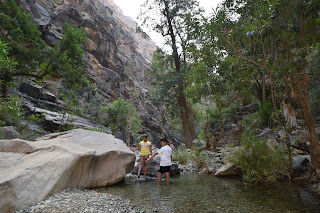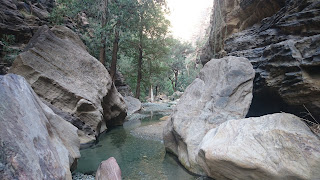Last summer, I was lucky enough to visit Kenya and see many majestic animals in the wild. One of the most memorable was the Masai giraffe.
Masai giraffe is one of the nine subspecies of giraffe (according to the International Union for Conservation of Nature) or one of the four species of giraffe (according to the Giraffe Conservation Foundation). Scientists are still not sure about the classification of giraffe, since the GCF, through new DNA testing, found that there are four species of giraffe and five subspecies, but the IUCN still officially recognizes one giraffe species and nine subspecies. Regardless, Masai giraffe is the largest species (or subspecies) of giraffe. They can be distinguished by their irregular shaped spots which extend down their legs all the way to their hooves.
We got to see many Masai giraffe in the game reserve of Masai Mara. Most of them were in small groups, although we did see a few lone giraffes. It was truly fascinating to watch them in their natural habitat as they ate and walked calmly. They reached their long necks up to get to the leaves, which they slowly chewed while wandering from tree to tree.
Giraffeworld.com says that Masai giraffe live in small groups with strong bonds between the members, especially the females. Calves form nurseries with females taking turns to look after them. Males do not usually interact with each other unless they are fighting for the right to mate.
They spend most of the day grazing and eat about 75 pounds of food per day. They eat twigs, fruits, and flowers, but they like the leaves of the acacia tree the best.
Lions and hyenas are their main predators, targeting vulnerable calves. They avoid the adults, since their powerful kicks can break a lions spine or skull. Masai giraffe can also run at speeds up to 35 mph (or about 56 km/s). Their kick and their speed are their only defenses. These might work against their natural predators, but they cannot protect them from poachers or from the loss of their habitat because of human activities.
According to the IUCN's Red List of Threatened Species, poachers and habitat loss are the reasons why the Masai giraffe has been recently declared Endangered. There are only 35,000 mature Masai giraffe left in the entire world. Giraffes have been listed as Vulnerable since 2016, and their numbers are only decreasing despite conservation efforts by the GCF and other NGOs.
Giraffeworld.com says that Masai giraffe live in small groups with strong bonds between the members, especially the females. Calves form nurseries with females taking turns to look after them. Males do not usually interact with each other unless they are fighting for the right to mate.
They spend most of the day grazing and eat about 75 pounds of food per day. They eat twigs, fruits, and flowers, but they like the leaves of the acacia tree the best.
Lions and hyenas are their main predators, targeting vulnerable calves. They avoid the adults, since their powerful kicks can break a lions spine or skull. Masai giraffe can also run at speeds up to 35 mph (or about 56 km/s). Their kick and their speed are their only defenses. These might work against their natural predators, but they cannot protect them from poachers or from the loss of their habitat because of human activities.
According to the IUCN's Red List of Threatened Species, poachers and habitat loss are the reasons why the Masai giraffe has been recently declared Endangered. There are only 35,000 mature Masai giraffe left in the entire world. Giraffes have been listed as Vulnerable since 2016, and their numbers are only decreasing despite conservation efforts by the GCF and other NGOs.
Seeing the Masai giraffes was one of the highlights of my visit to Kenya. I am very grateful that I got the opportunity to watch them in person. It was a remarkable experience, and one I hope many future generations will get to enjoy. This will only be possible if we work to save giraffes. We need to act now before it's too late, or the iconic giraffe will be gone forever.

















